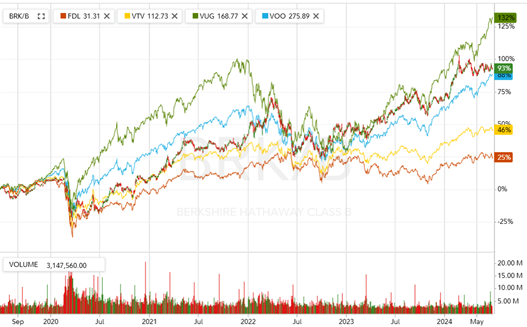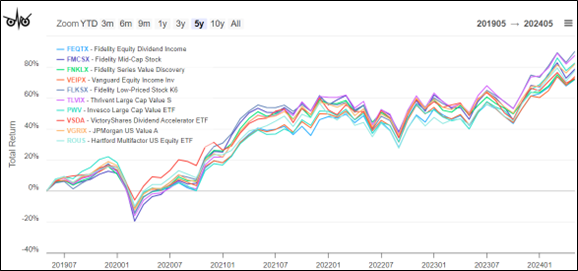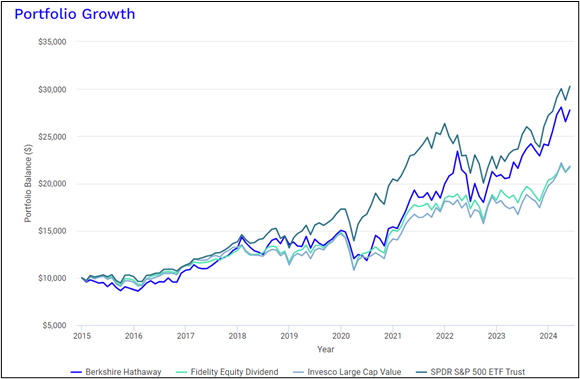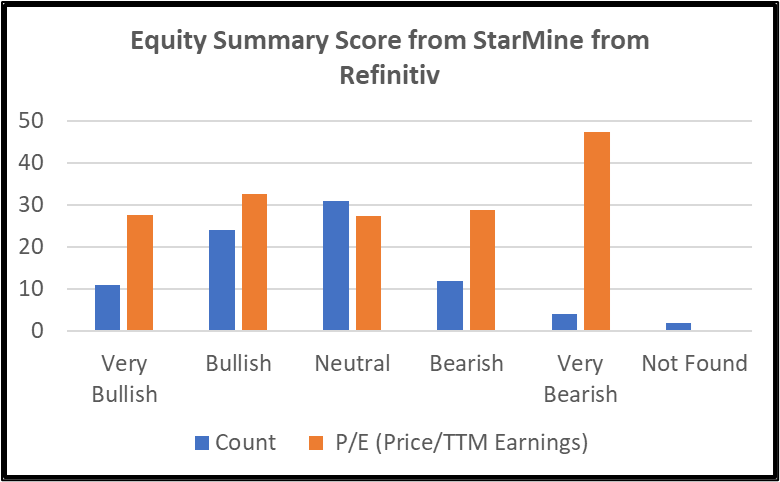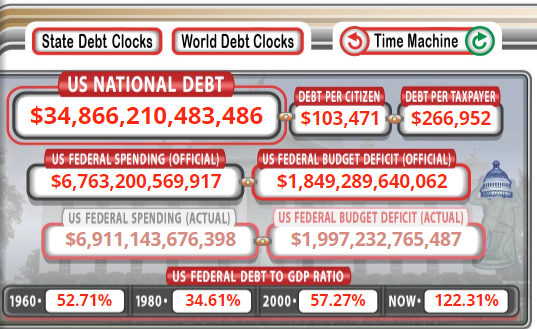Dear friends,
Welcome to Really, Really Summer … and to the July issue of Mutual Fund Observer.
Summertime is an especially blessed and cursed interval for those of us who teach. On the one hand, we’re mostly freed from the day-to-day obligation to be in the classroom. Some of us write, some travel, and some undertake “such other duties as may from time to time be assigned” by our colleges. On the other hand, we hear the clock ticking. All year long, as we try to face down a stack of 32 variably literate essays at 11 p.m. Sunday night, we think “If I can just make it to summer, I’ll recharge, do some deeper reading, wake when I want and it’ll be great!” About the first thing we notice when summer does arrive, is that summer is almost spent.
 Rather than despair, I garden. And discover that nature will do as it pleases. In this case, seeding a sunflower patch next to my garage door for, let’s call it, no discernible reason.
Rather than despair, I garden. And discover that nature will do as it pleases. In this case, seeding a sunflower patch next to my garage door for, let’s call it, no discernible reason.
And maybe that’s cause to celebrate, and to breathe.
In this month’s issue …
By long tradition, Charles and I attended the Morningstar Investment Conference in celebration of the 40th anniversary of the firm’s founding. I, here, and Charles in a separate essay, will share the most memorable events of the two-day gathering at Navy Pier. I would commend, especially, his really perceptive observations about which of yesterday’s hottest topics did not get a single mention within his earshot: Cathie Wood, COVID, direct indexing, crypto …
Devesh continues his investigation into international investing and reports on two days spent with the teams from Artisan Partners. In support of his work, we provide a list of the 10 most consistently excellent international funds and ETFs. You might be surprised to learn which fund and which ETF are breathing hard down Artisan International Value’s neck.
Lynn Bolin, enjoying retirement BTW, takes a serious look at Berkshire Hathaway as a mutual fund. Given Mr. Munger’s passing and Mr. Buffett’s increasingly open discussions of a future in which he’s not present, it seems like a good time to think beyond The Oracle of Omaha model.
One of the most intriguing questions for investors is “Who can you really trust?” Working in partnership with the folks at Morningstar, we can say with fair confidence that 10 mutual fund families get it right – really right – consistently, year after year. We talk through the separate data sets we plumbed and the reason that we both agree on #1: Dodge and Cox.
At this point, you might reasonably conclude, “the screener at MFO Premium does amazing stuff for a few hundred that other screeners might not accomplish for tens of thousands.” Yep. As Charles notes in a separate article, he is hosting a free / live / interactive / useful briefing on MFO Premium on Wednesday, 10 July, at 11 a.m. Pacific (2 p.m. Eastern). He’ll walk you through how to use the MultiSearch and talk about recent upgrades including fund flows, an Analytics user interface, and selectable ETF benchmarks. If you’re serious about vetting funds and ETFs head-to-head, you should register.
Shadow, as ever, tracks down the industry’s turnings and squirmings, with a huge number of liquidations underway … and happy word of the Primecap reopenings.
But first …
Ten takeaways from the Morningstar Investment Conference …
The convention itself
-
It’s not a conference for investors anymore. Only 12 of the presenters carried the title “portfolio manager” in the convention program, but nine of those 12 represented firms – Franklin Templeton, Gabelli, MFS, PIMCO, T Rowe Price, Baillie Gifford, JP Morgan AM – that were sponsoring the conference. The only “name” managers were David Herro (Oakmark) and Rajiv Jain (GQG), both consigned to speak late in the afternoon of the second day.
In an attempt to rebuild dwindling attendance, Morningstar offered to waive the conference fees for financial planners who agreed to attend three sponsored sessions (which were definitely not sales pitches by Franklin Templeton, Gabelli, MFS …).
The exhibitor hall was marked by unstaffed tables (Fidelity reserved a single 5’ table with a handful of printouts but, for much of the conference, no representative … which was oddly common) and missing stalwarts (Chicago-based firms such as Ariel, Calamos, Northern Trust and RiverNorth, notably).
The conference theme was “Evolve Forward,” which begs the question, “In what other direction could you evolve?” It might simply be a healthy evolution that financial planners are spending less time on things that are hard and iffy (selecting up-and-coming managers) and more time learning about “winning the next generation of high-net-worth investors.” Especially with the infiltration of AI into asset management, more and more of the investment part might simply be outsourced so that planners can spend more time and creativity helping their clients manage life’s million other challenges.
-
Morningstar is taking AI seriously in its analytics and interface. Morningstar has launched its own propriety AI model, named “Mo.”

left to right, Morningstar’s Mo and MFO’s Mofo
Mo debuted last year and supports both a typed and verbal interface. You ask an investment question which is routed to The Morningstar Intelligence Engine. Mo does not (yet) give advice but does synthesize investing insights from the 750,000 products Morningstar tracks and has the potential to help advisers and others automate tasks automate dull, routine calculating in order to free up time for person-to-person contact.
I suppose I should have asked Mo how Morningstar determined that the fair value for Trump Media – a firm with $4 million in annual revenue – is $50.62 / share, implying an $8 billion market cap, making it deeply undervalued today. But the moment passed.
As a quick update for MFO fans, we’ll note that we’re also working on an artificially intelligent avatar. We’ve named him … Mofo. Mofo’s answer to all investment questions will be the same: “If you’re not willing to put it in a lockbox for 10 years and get on with your life, don’t buy it!”
Broad considerations about markets and firms
-
Large cap value stocks might represent the market’s next sweet spot. At least if you believe Savita Subramanian, Head of US Equity & Quantitative Strategy for BoA / Merrill Lynch. Ms Subramanian was the conference’s kickoff speaker and was introduced by a high-energy Morningstar podcaster with the shout-out: “Are you ready to hear her bullish take on this market? Are. You. Ready!”
Subramanian made two arguments. First, the US stock market is not overvalued in support of which she offered the usual blizzard of graphs (pro tip: if you don’t want people to think about whether you’re right, bury them with dozens of carefully selected data points).
Second, large cap value is the coming sweet spot. Pensions and hedge funds have become dramatically underweight publicly traded equities in favor of private equity, but the attraction of the latter is fading as correlations rise and gains are arbitraged away. In particular, she projects that boomers will need income, that fixed-income isn’t attractive (we recently reached, she reports, a 5,000-year low in interest rates), and so there will be a migration to equity-income strategies centered on dividend-paying stocks. Prior to 2013, 50% of equity returns came from dividends (a troubled statement depending on the timeframe since, as she noted, the economy has changed) and that might recur. Meta and Alphabet are both looking to initiate dividends, a sign that big tech growth stocks are maturing into more traditional value corporations. Some IPOs have even played with the idea of incorporating a dividend into their initial offering (my head hurts). Sectors like energy (companies that are now rewarding their executives for decarbonizing and cash return rather than on meeting production targets), tech, and financials stand to benefit.
-
Parnassus is taking AI seriously in its security selection. I spoke with Andrew Choi, co-PM of Parnassus Core Equity. He was attending a sustainable investment conference being held
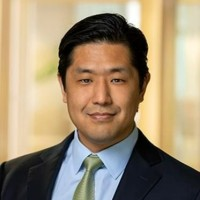 next to one of the conference hotels and agreed to chat with me. Choi joined the firm as an intern in ’17, was hired in ’18, and became co-PM in ’22. One of the other Parnassus folks allowed that he might well be leading the firm in a decade.
next to one of the conference hotels and agreed to chat with me. Choi joined the firm as an intern in ’17, was hired in ’18, and became co-PM in ’22. One of the other Parnassus folks allowed that he might well be leading the firm in a decade.At $30 billion in assets, Parnassus Core Equity is just a bit outside our normal coverage universe. The fund has three tenets: quality companies, value consciousness, and ESG sensitivity. They view the ESG stuff as performance-relevant, rather than being just an expression of a set of values. It is, by all of the metrics we track, an exceptionally solid, sustainable core holding.
A lot of our conversation centered on the team’s work in assessing how companies are managing their use of and exposure to AI. He argues that AI might be a black box, but the corporate planning around it is assessable. Are there policies on use? Committees responsible for keeping up with it? Monitoring systems? Formal written criteria? If not, that’s a major governance flag, both because the company might misuse AI and because they will be more likely to become a victim to it. He argues that lots of tech titans (Microsoft, Google …) are making major investments in managing AI while lots and lots of small firms are cutting corners (for example, training their models on illegally obtained content and skimping on internal controls) that risk biting them, and us, in the butt.
He struck me as an exceptionally bright guy.
-
Workers will enjoy being replaced by AI. Really. Zack Kass, a keynote speaker (“my current jobs are being a keynote speaker, serving on boards, advising boards and thinking about the future”) and former OpenAI executive, argued that AI is better at some sorts of tasks and always will be. In particular, AI is good at things he calls “calculating tasks,” such as winnowing through a thousand court precedents or a hundred thousand investment data points. Those tasks are essential to professionals but, he argues, incredibly stressful, exhausting, boring, and disheartening. AI’s great potential, he argues, is to free people to do the stuff they love (critical and ethical thinking) while AI does the scutwork in the background.
-
Baird thinks success starts with getting the culture right. I had a wide-ranging conversation with Mary Ellen Stanek, winner of Morningstar’s 2022 Outstanding Portfolio Manager award,
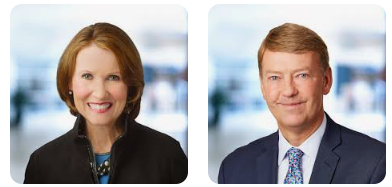 and Warren Pierson, who are co-CIOs at Baird and co-managers of the $30 billion Baird Core Plus Bond Fund. The fund does exactly what such funds should do: it steadily offers modestly higher returns and modestly lower volatility than its peers. Over the past 10- and 15-year periods it has posted top quartile returns.
and Warren Pierson, who are co-CIOs at Baird and co-managers of the $30 billion Baird Core Plus Bond Fund. The fund does exactly what such funds should do: it steadily offers modestly higher returns and modestly lower volatility than its peers. Over the past 10- and 15-year periods it has posted top quartile returns.We talked less about the fund and more about their approach to creating a healthy corporate culture, which Pierson described as “priority #1.” It’s in part about consistent internal messaging – the younger associates hear rather frequently that “our ally is time, not timing” and “we should be able to set it and forget it” – that orients their future leaders, in part about being willing to host 20 interns in hopes of finding one phenomenal new colleague, and in part about being confident enough in your own abilities that you don’t forever feel the need to prove that you’re all-knowing and all-wise.
In consequence, good ideas rise to the top and valid concerns get freely expressed. That seems fundamentally healthy. Their perspectives struck me as singularly healthy, thoughtful, and productive … the fact that they align with my own organizational impulses doesn’t hurt at all!
Funds that I hadn’t yet noticed
-
Centre is thinking about “infrastructure” in 21st-century terms. We talked a bit with Gregory Stitt of Centre Asset Management, adviser to Centre Global Infrastructure. “Infrastructure”
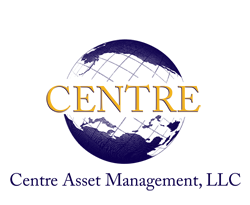 normally brings to mind the structures of the 19th and 20th centuries: roads, bridges, pipelines, airports and so on. Centre argues for a more contemporary reading, and so one-third of the fund is invested in “social infrastructure” which might look like SoftBank, HCA Healthcare, or the French telecom Orange. The fund has, by Morningstar’s reckoning, 42% in telecom and health while its average peer has under 2%.
normally brings to mind the structures of the 19th and 20th centuries: roads, bridges, pipelines, airports and so on. Centre argues for a more contemporary reading, and so one-third of the fund is invested in “social infrastructure” which might look like SoftBank, HCA Healthcare, or the French telecom Orange. The fund has, by Morningstar’s reckoning, 42% in telecom and health while its average peer has under 2%.The fund pays a monthly dividend, driven by a 2.38% yield on the portfolio. The question, of course, is whether “different” is also “better.”
Performance since inception (02/2018 – 06/2024)
Annual return Maximum drawdown Ulcer Index Sharpe ratio Centre Global Infra 3.4% -24.4 7.7 0.08 Lipper Global Infrastructure peers 3.7 -25.2 9.7 0.10 I’m scheduled to talk a bit more about the strategy with manager James Abate, who also runs the very sold Centre American Select fund, about the fund’s positioning as part of an upcoming article on infrastructure investing. So, more soon!
-
Boston Partners just launched a long/short small-cap fund. That’s driven by the recognition that about 40% of small-cap companies are losers with … umm, negative earnings in any given year. The fund will be run by the manager of WPG Partners Select Small Cap Value Fund, using its portfolio for the long positions and quant screens to establish the shorts. That fund has an exceptional record in its 2.5-year history and is based on a private fund with a longer, equally exceptional record. We write more about Select SCV in this month’s article, “Families you can trust,” as our nominee for the one Boston Partner’s fund that you should really get to know.
Select Hedged (WPGHX) launched on May 3, 2024, so it is new but promising. Shorting small caps is rare. Boston Partners has a good record of managing long/short funds. And the WPG team seems solid. We’ll watch it for you.
-
Driehaus just launched an international developed equity fund. It’s called the … uh,
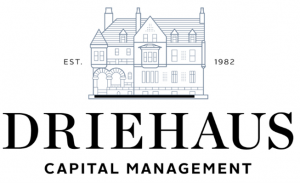 Driehaus International Developed Equity Fund (DIDEX), and the fund launched on April 30, 2024. Daniel Burr is co-manager of the fund, he’s an Oberweis alumnus and also co-manager of the five-star Driehaus International Small Cap Growth (DRIOX). That’s a very good thing, given that DRIOX has sort of clubbed its peer growth for the past 20 years. Morningstar notes that Driehaus “specializes in high-conviction, actively managed, and growth-oriented strategies designed to complement an investor’s core equity and fixed-income exposure.” All of their work starts with the belief that “market expectations tend to be ‘anchored’ to historical information and that points of inflection, therefore, introduce dislocations between market expectations and fundamentals which generate significant alpha capture opportunities.” We’ll watch this one, too.
Driehaus International Developed Equity Fund (DIDEX), and the fund launched on April 30, 2024. Daniel Burr is co-manager of the fund, he’s an Oberweis alumnus and also co-manager of the five-star Driehaus International Small Cap Growth (DRIOX). That’s a very good thing, given that DRIOX has sort of clubbed its peer growth for the past 20 years. Morningstar notes that Driehaus “specializes in high-conviction, actively managed, and growth-oriented strategies designed to complement an investor’s core equity and fixed-income exposure.” All of their work starts with the belief that “market expectations tend to be ‘anchored’ to historical information and that points of inflection, therefore, introduce dislocations between market expectations and fundamentals which generate significant alpha capture opportunities.” We’ll watch this one, too.They’re also indirectly responsible for Chicago’s Driehaus Museum, which celebrates the architecture and design of the late 19th and early 20th centuries. Intensely excellent.
-
AllSpring Core Bond Plus is ready to spring! AllSpring Core Bond Plus has a solid record in the core-plus category, steadily inching out its peers in performance often with a bit less
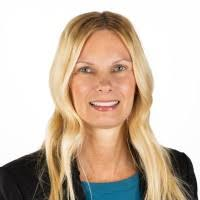 volatility. Morningstar designates it as a four-star fund. Lead manager Janet Rilling argues that one advantage is her team’s time horizon. Most intermediate-bond teams work from a 3–5-year forecast, while her team has a six-month horizon for positioning the portfolio. At base, she argues, the longer horizon makes teams less able to adapt to sudden changes in conditions because … you know, long-term investing! Her argument is that by focusing just six months out, the team can naturally, easily, and continuously reposition the portfolio to maintain resilience in the face of unanticipated developments. For other teams, any change feels portentous and excessively visible, so they hesitate.
volatility. Morningstar designates it as a four-star fund. Lead manager Janet Rilling argues that one advantage is her team’s time horizon. Most intermediate-bond teams work from a 3–5-year forecast, while her team has a six-month horizon for positioning the portfolio. At base, she argues, the longer horizon makes teams less able to adapt to sudden changes in conditions because … you know, long-term investing! Her argument is that by focusing just six months out, the team can naturally, easily, and continuously reposition the portfolio to maintain resilience in the face of unanticipated developments. For other teams, any change feels portentous and excessively visible, so they hesitate.
Portfolio update
I rarely change my portfolio and my holding period for funds tends to be 10 to 20 years. I tend to work hard to generate confidence in a manager and a strategy, and then step back except to add funds.
In June 2024, I invested in Seafarer Overseas Value Fund (SIVLX). We have written frequently and with respect, about lead manager Paul Espinosa and his work. The fund has earned five stars from Morningstar, it was the best performing EM fund during the ugly 2022 downturn, has the lowest Ulcer Index of any emerging markets fund … and has comfortably outperformed its peers since inception (five years ago) and most notably over the past three years.
Our profile of SIVLX concluded:
Seafarer has a long history of dogged independence, of managing to preserve their investors’ wealth, and of producing reasonable returns in unreasonable markets. Seafarer Overseas Value Fund has embodied those family traits and has served its investors exceptionally well, even in markets that did not favor their style. As the world begins to grapple with the realities that Seafarer has already mastered, their prospects seem exceptionally bright. It surely deserves a place on any equity investor’s due-diligence list.
Purchased directly from Seafarer with an automatic investing plan, my account qualified for access to the low-cost Institutional share class. I funded the purchase by shifting money between other funds. It has earned rather more attention, and assets, than it’s received.
Thanks, as ever …
to the good folks at Morningstar, both the Morningstar staff and analysts who were superb hosts and guides, and to the managers who found time to sit and chat. You make a difference.
 To reader Bradley Barrie, of the Dynamic Wealth Group, who’s also co-PM for the Dynamic Alpha Macro Fund. The fund launched exactly a year ago, and we wrote a bit about it in August 2023. It (represented by the blue line) has gathered $100 million in AUM and has, as the little graph to the right suggests, done remarkably well. We’ll watch.
To reader Bradley Barrie, of the Dynamic Wealth Group, who’s also co-PM for the Dynamic Alpha Macro Fund. The fund launched exactly a year ago, and we wrote a bit about it in August 2023. It (represented by the blue line) has gathered $100 million in AUM and has, as the little graph to the right suggests, done remarkably well. We’ll watch.
To Paul of New Paltz and Richard of Atlanta. For your kind gifts, grazie!
And to our faithful regulars, Wilson, Roger Fox and S&F Investment Advisors, Gregory, William, William, Stephen, Brian, David, and Doug, erg bedankt!
 Chip and I will be heading off for a bit of R&R in the UP of Michigan at mid-month. It’s not quite a honeymoon but it promises some blessed quiet. We’ll overnight in Green Bay on our way up, base in St. Ignace for the better part of a week, then drop through the … uhh, LP of Michigan (?) with stops at Archival Brewing in Grand Rapids (their specialty is “recreating historic and forgotten styles of beer from around the world tapping into ancient brewing processes, ingredients, and recipes”) and Zingerman’s Deli (the best in America, Chip’s New York biases notwithstanding) in Ann Arbor, along the way.
Chip and I will be heading off for a bit of R&R in the UP of Michigan at mid-month. It’s not quite a honeymoon but it promises some blessed quiet. We’ll overnight in Green Bay on our way up, base in St. Ignace for the better part of a week, then drop through the … uhh, LP of Michigan (?) with stops at Archival Brewing in Grand Rapids (their specialty is “recreating historic and forgotten styles of beer from around the world tapping into ancient brewing processes, ingredients, and recipes”) and Zingerman’s Deli (the best in America, Chip’s New York biases notwithstanding) in Ann Arbor, along the way.
We’ll be thinking of you, but only occasionally.
By month’s end, I’m hoping to meet with some of the folks in Kansas City, most particularly the Buffalo Funds managers … and, quite possibly, their neighbors at Avantis, Nuance, and Harbor. We’ll let you know how finances and travel work out!


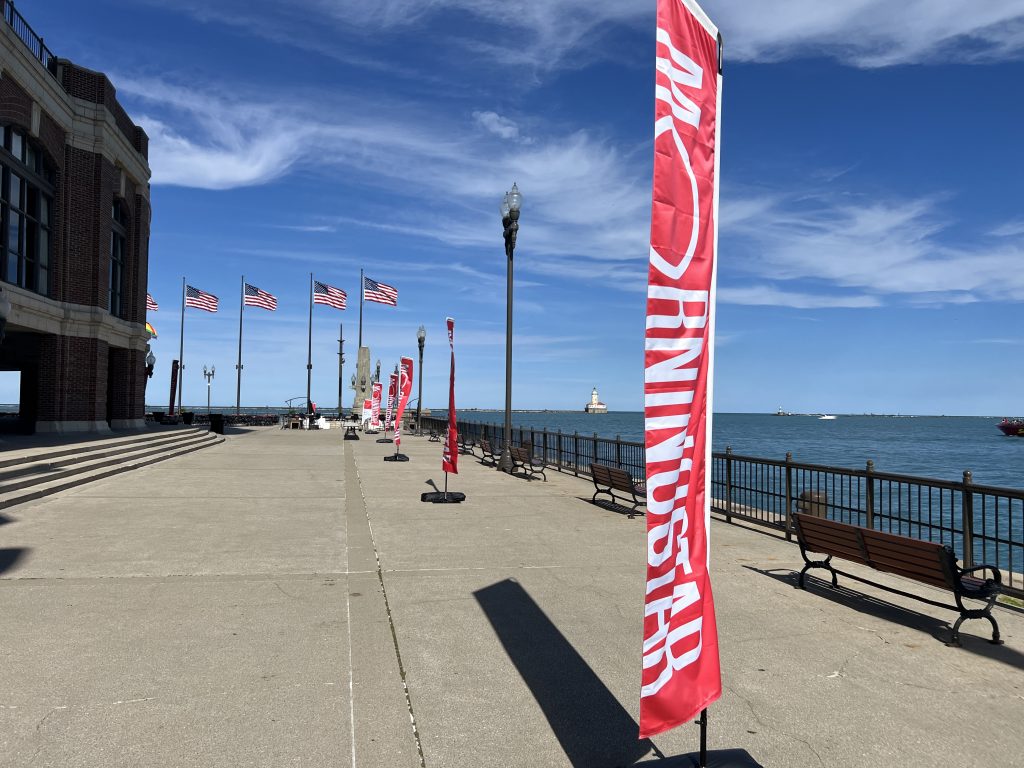
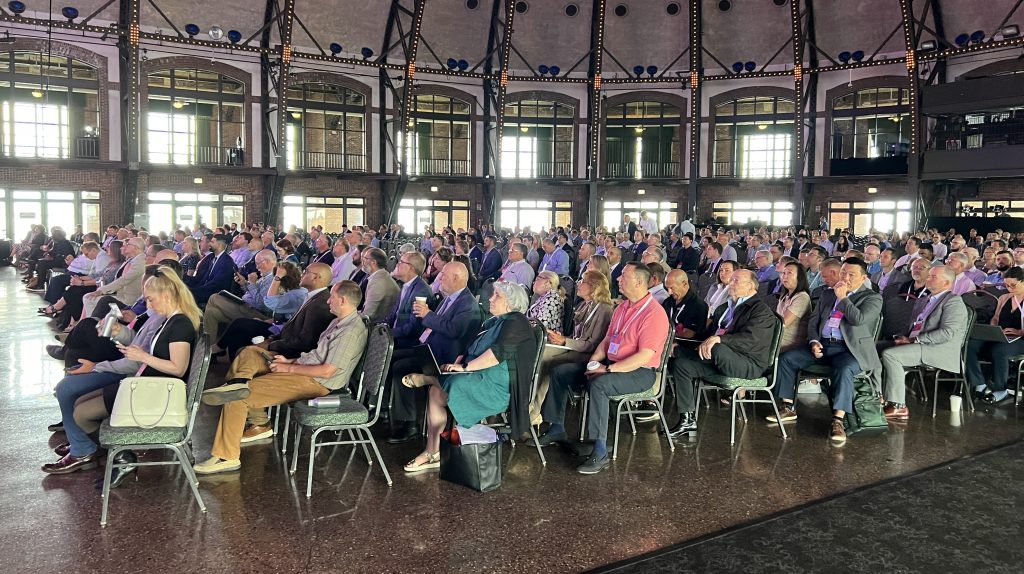
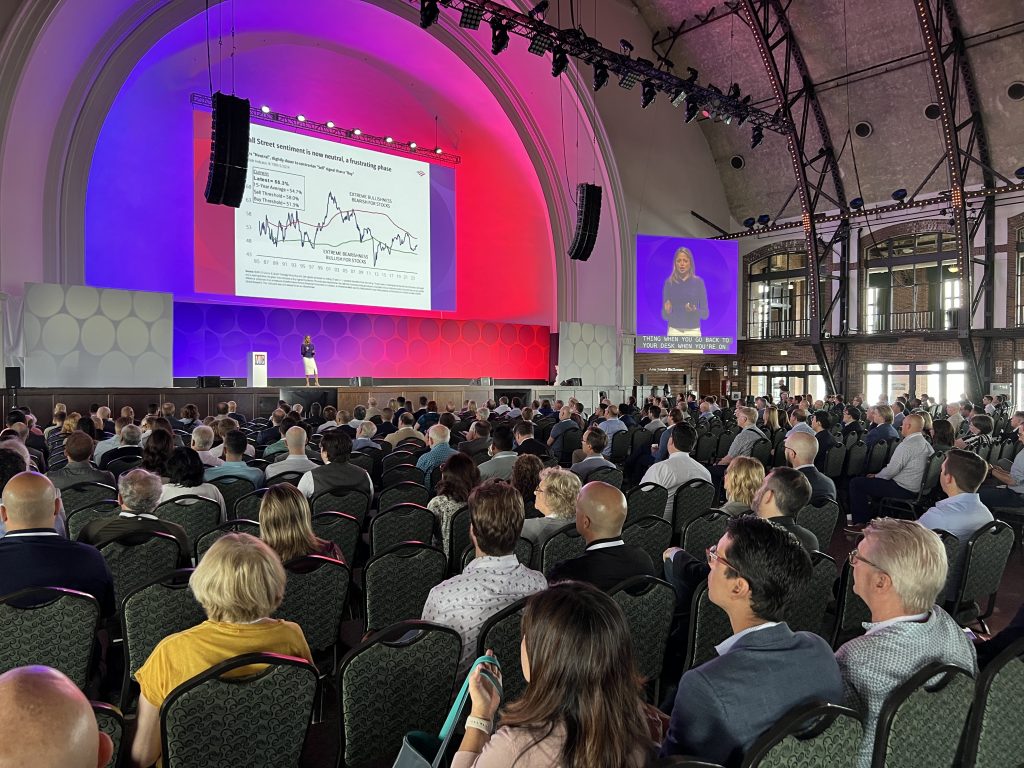
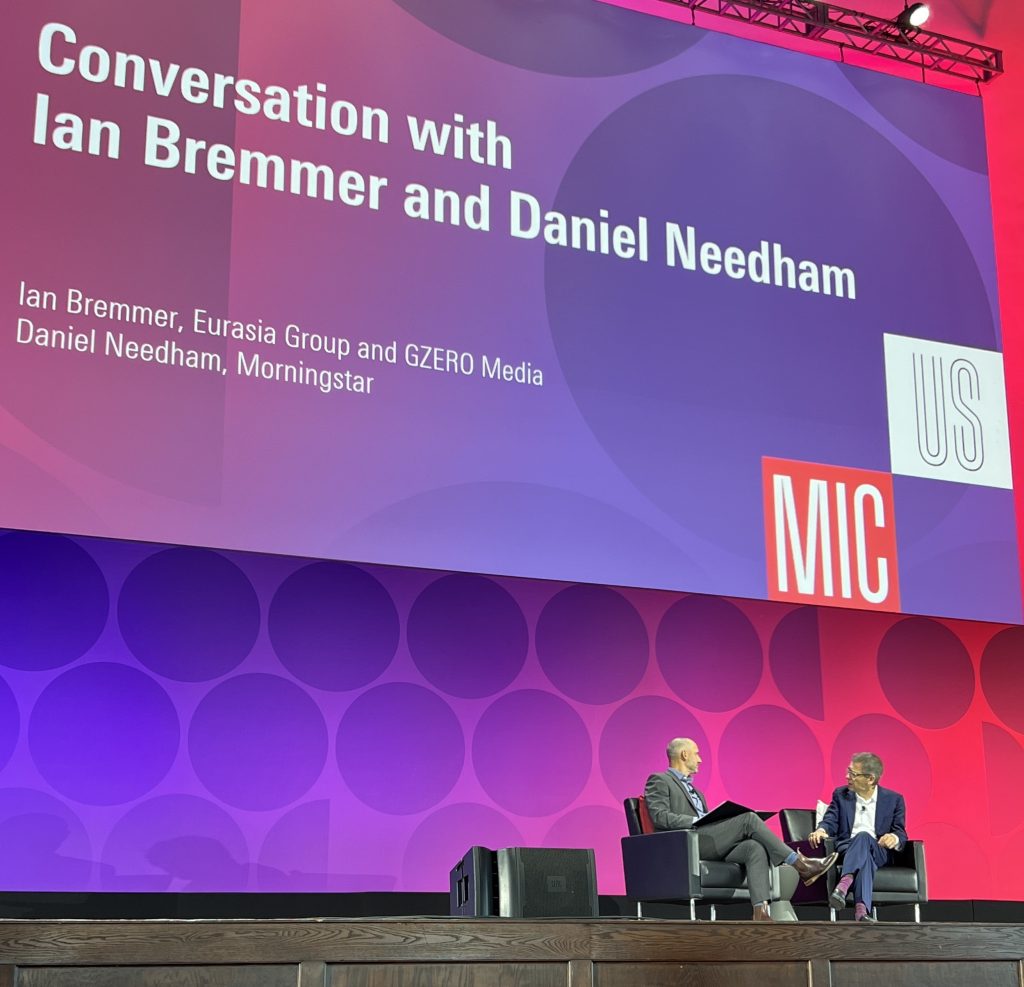
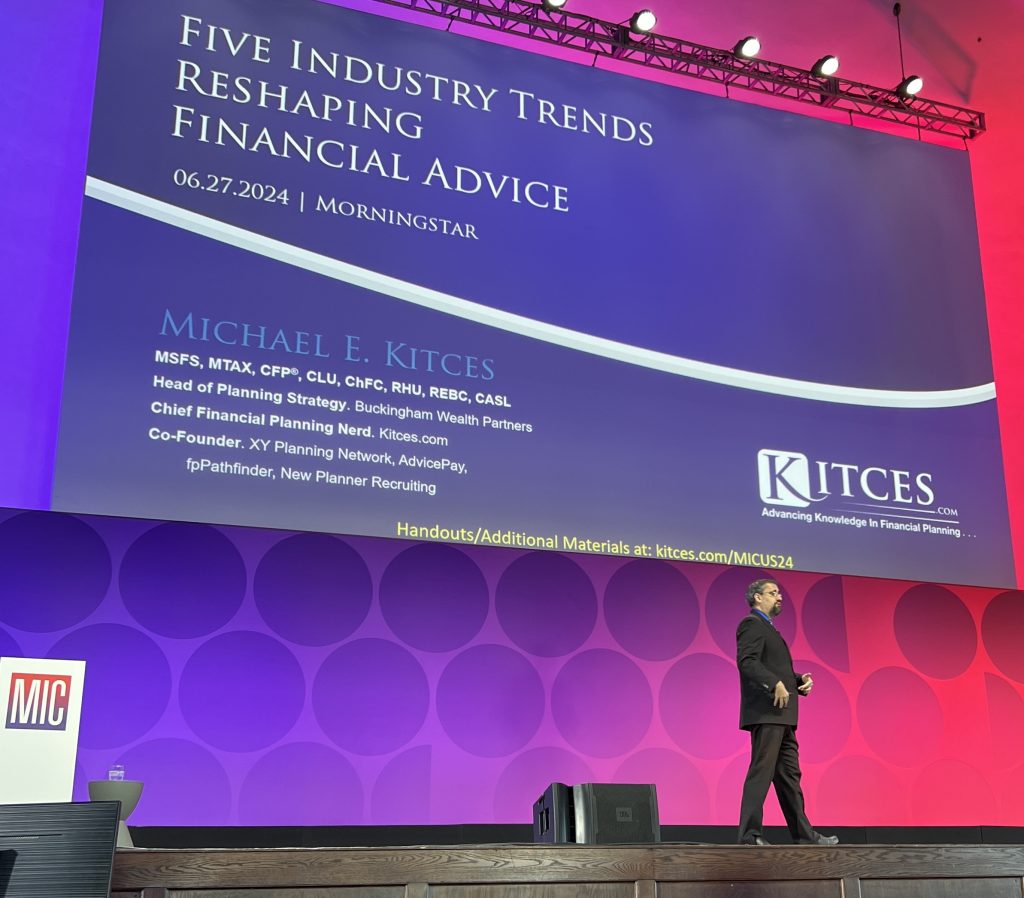
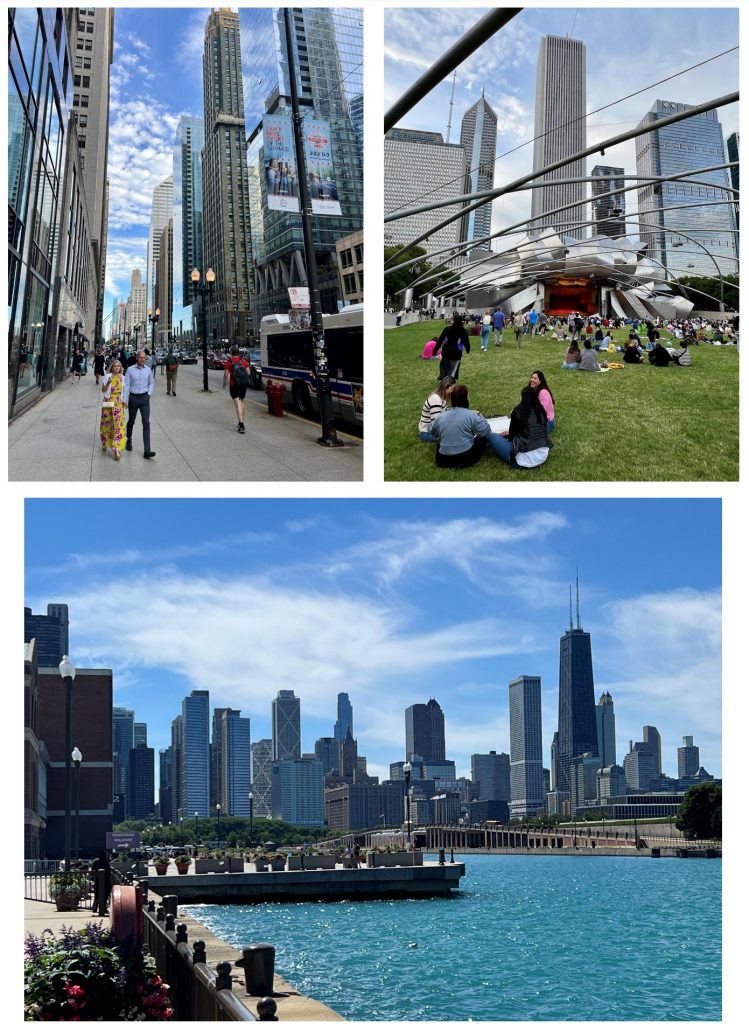
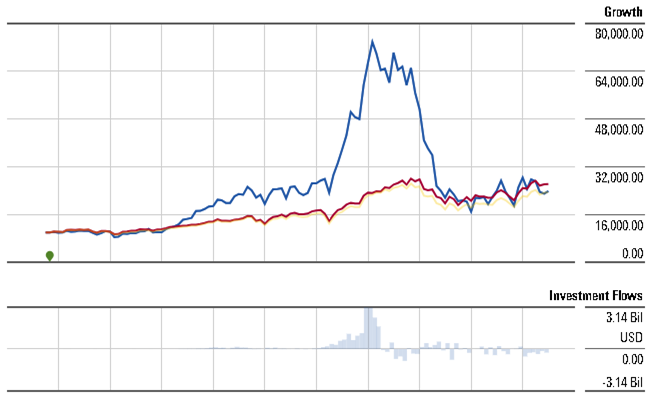 In collaboration with the folks at Morningstar, MFO decided to identify the firms that were least likely to ever betray their investors by soaring and then smashing.
In collaboration with the folks at Morningstar, MFO decided to identify the firms that were least likely to ever betray their investors by soaring and then smashing. survivorship bias, we enlisted the assistance of Dillon McConnell, an Associate Quantitative Analyst at Morningstar, who was able to query Morningstar’s survivorship-free database for us. He identified firms with a 100% 10-year success rate. That means that every fund that the firm had 10 years ago is still in operation and has beaten its peers over the past decade. There are 68 firms with a 100% 10-year success rate, although almost all of those are advisers with a single fund (e.g., Bretton Fund). Forty-one of those firms also have a perfect five-year record. (The complete list is
survivorship bias, we enlisted the assistance of Dillon McConnell, an Associate Quantitative Analyst at Morningstar, who was able to query Morningstar’s survivorship-free database for us. He identified firms with a 100% 10-year success rate. That means that every fund that the firm had 10 years ago is still in operation and has beaten its peers over the past decade. There are 68 firms with a 100% 10-year success rate, although almost all of those are advisers with a single fund (e.g., Bretton Fund). Forty-one of those firms also have a perfect five-year record. (The complete list is  The unambiguous winner is Dodge & Cox. Dodge & Cox was founded in 1930 by Van Duyn Dodge and E. Morris Cox. They shared the belief that the investment firms of their day were undisciplined and self-serving; that is, the principals put their own interests ahead of their clients’. Dodge and Cox aimed to change that.
The unambiguous winner is Dodge & Cox. Dodge & Cox was founded in 1930 by Van Duyn Dodge and E. Morris Cox. They shared the belief that the investment firms of their day were undisciplined and self-serving; that is, the principals put their own interests ahead of their clients’. Dodge and Cox aimed to change that.
